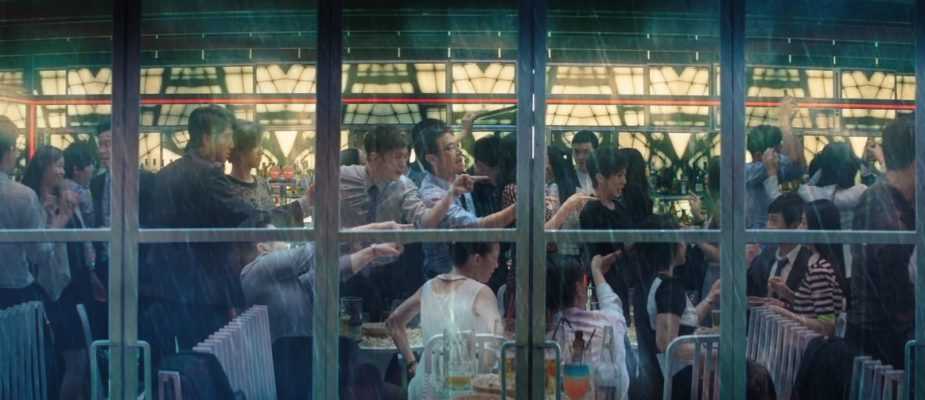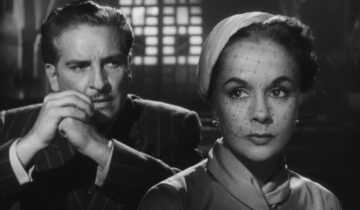The first couple of days of competition are always somewhat frustrating for the late-arriving Berlinale pass-holder: for reasons with which I will not bore you, it is almost impossible to get into any notable screenings before day three. With this in mind, and with the fine Hail, Caesar! (2016), the 66th Berlinale’s opening night film, already under my belt, I set my sights on a more attainable ticket for my first 2016 festival screening: German auteur Ulrike Ottinger’s (Joan of Arc of Mongolia) marathon, 709-minute – now you can see why it was attainable – Chamisso’s Shadow (2016). Before I get any further, let me just say I only made it through “Chapter 1: Alaska and the Aleutian Islands,” which, full disclosure, was by design. Better a taste of real cinema (three hours-worth, in fact) on my first full day at the fest than none at all.
Constructed out of the remnants of multiple travel journals – including not only the titular Adelbert von Chamisso, but also those of Captain James Cook and a colleague of Vitus Bering, among others – and composed of exquisitely lensed digital camerawork by the filmmaker, the non-fiction Chamisso’s Shadow is the sort of film that will be screened in its massive format only in the most adventurous sidebars to major international festivals (with Ottinger and a number of friends and collaborators on hand for the premiere). While there is something very television-friendly to the conceit of this massive travel journal, this is a work for the discomforts of the film auditorium, inasmuch as its larger subject (in every sense) is time: not just the massive duration of the film itself, even in the hugely abridged first-chapter form that I experienced, but the large and small historical discrepancies that open up between the 18th-century and 19th-century settings of the film’s travel journals, and Ottinger’s own 21st-century experience of one of the world’s most beautiful (and, using the word reservedly) timeless spaces; not to mention the very different experiences of time that especially the native Aleutians, historically at least, face and faced – where one’s day is spent in a constant whirlwind of the subsistence activity, and where the present-day arrival of the ferry becomes the cause of massive upheaval.
Chamisso’s Shadow is substantial work clearly, and not just for the conceptual rigor with which Ottinger matches her subject with an impossible temporal commitment, or even for a land-bridge extension of the filmmaker’s interest in Silk Road peoples: image for image, this is truly beautiful film art, whether we are gazing on the region’s moving gray skies and poetical volcanic islands or the striations of blue, green, and black that surround a frolicking collective of sea otters – a source of considerable fascination for the filmmaker in part one. I suppose in the midst of a festival that provides hundreds of different films to hundreds of thousands of attendees (when they can manage a ticket), with very few nonetheless rising to the level of the genuinely noteworthy, transporting and otherworldly beautiful imagery is really what we’re after.
I won’t linger on my other first full-day screening, Karl Reisz’s Table for Love (1967), from the Deutschland 1966 retrospective section, for very long, save to say that this is likely the only German movie of the mid-1960s that features a Mormon baptism and conversion from its very young mother of five. Sociological interest and a sense of formal experimentation, sure, but that doesn’t always make for great cinema.
As I prepare for three competition films and a fourth world premiere on day number two, let me close by expressing my hope that one of this year’s films will match the most purely pleasurable film I saw in the immediate lead up to the 66th Berlinale, and I’m not talking about Hail, Caesar!. No, the film to which I am referring is none other than Johnnie To’s Office (2015; pictured), released commercially in 3-D last year, and now playing on United international flights. Yes, an in-flight, 2-D version of a 3-D muscial is the most invigorating cinema I have seen so far this calendar year, and I can’t wait to screen it a second time during my long flight home later next week. Indeed, I can’t imagine that any amount of festival fatigue will make me want to stay away from this artifice-laden treatment of corporate malfevscence and romance in the era of the financial crash. Simply put, to make some of the most singularly engaging commercial cinema out there, the moral, as always, is to spend less time following the story’s plot – no source of satisfaction in Chamisso’s Shadow, Hail, Caesar! or The Office – and more time attending to what’s on screen (whatever its size), whether it is the sheer beauty of Ottinger’s landscapes, the fun of the Coen’s genre sampling, or the pulpy pleasures of To’s scaffold sets, song set-pieces, and sexy corporate intrigue.










